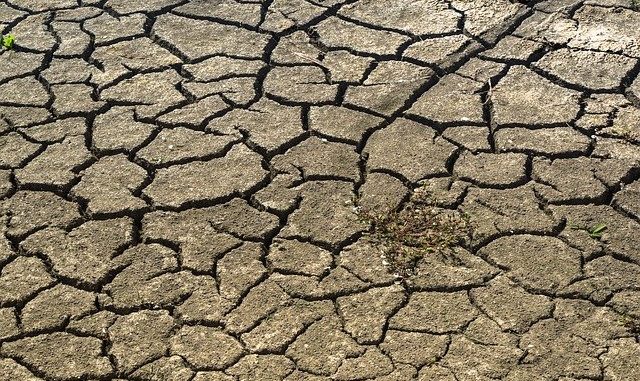
Famine, that word for extreme food shortage for a population had in my view I hoped been a declining issue but yet again I’m fooled by a naive optimism. Recent headlines on famines around the world from a variety of newsfeeds keep popping in front of my eyeline. The opening statement from a news report on the Aljazeera web-site concerned the UN’s World Food Programme. The UN reported that ’41 million people in 43 countries are at imminent risk of famine’ with another 600,000 in another four countries experiencing famine-like conditions. That’s quite a warning to the world and it doesn’t necessarily mean its all down to climate change but there are it appears some sad examples where famine cannot be put down to just COVID-19 and economic mismanagement.
The one country at the moment which appears to be marching steadily towards one of the most severe food shortages is Madagascar. It’s not a country that would have immediately come to mind when so many other places such as Ethiopia, Nigeria (especially in Biafra) and the Sudan have grabbed the attention but the island state is one where climate change seems to be the main cause of an enormous food shortage.
The other wake-up calls concerning the adverse effects of climate change come from the rise in extreme weather events such as wildfires that persistently hit the western United States, those fires breaking out around the Mediterranean and the continuous fires in Siberia and other parts of Russia. There have been extreme temperatures recorded in Europe too. It reached 48.8ºC which is unheard of but regularly topped in other parts of the world.
Most food shortages – I suspect all of them in truth are due to water shortage. Madagascar has suffered one of the worst droughts anywhere. The situation is now so serious that many families are seeking out locusts to eat for their own survival. It is well established that a consequence of climate change is rising temperatures and with it water shortages.
The warning signs have been sounded for a number of years. It wasn’t that long ago, somewhere between the years 2006 and 2008 that there was a global food crisis where I noticed that 115 million people were pushed into extreme hunger. The COVID epidemic has produced a similar effect in pushing people into hunger the impact has been more marked because it comes on top of climate change.
Climate change is raising temperatures it seems everywhere so drought and water loss is exacerbated. The world’s population is the architect of climate change. Throughout our recorded history people have changes the environment to suit our needs so that we can lead a more effective life. Unfortunately we have also changed the climate in the process. Our actions are having a tremendous impact on the earth and all of us collectively are now responsible for taking the matter of climate change in hand and attempting to improve the situation to our benefit.
Another factor which sits on top of climate change is the notion of the frozen conflict where a war has ended but there is no peace are any political construct which successfully resolves the situation. The instability caused means that fighting can breakout again very rapidly. It also brings a certain level of food insecurity with it and in some of those countries there is a high level of food poverty.
Food waste is a surprising contributor to greenhouse gases especially carbon dioxide. If you’ve ever seen the Drawdown project report, it claims that if landfills were a nation they would be the third largest emitter of greenhouse gas behind China and the United States.
At a more general level of concern, food supplies around the world may well be unable to keep pace with the growing population of the world according to Chatham House. They have been putting together a report on food supply up to 2050 as part of a response preceding the critical United Nations COP26 climate summit in Glasgow.
The Chatham House report considers that our basic foods are all going to increase in price because yields have started declining. This report considers that by 2050 yields will decline by nearly a third. It’s a consequence of various gas emissions especially carbon dioxide and methane. There is also the issue which I raised at the beginning of the last paragraph of an increasing population which will reach 9 billion by 2050. I have seen figures of 10 billion but whatever the population figure the numbers are extraordinarily high. It means roughly that farmers need to grow 50% more food as a result to meet that challenge.
Famines are extreme cases where population cannot feed themselves but almost equally insidious is the level of poor nutrition throughout the global population anyway. At the IFT First event in 2021 there was a slide which often appeared preceded panel events which stated that over 1.5 billion people haven’t enough money to have a diet that meets the required levels of essential nutrients. Another statement ‘that more than 2 billion people from mostly low and middle-income countries do not have regular access to safe, nutritious and sufficient food. And so it appears that even if you can keep people alive but only just by giving them some food, there are substantial populations out there who just do not have enough to keep them at peak optimum nutrition.
Much of the Chatham House Report is apocalyptic but it aims its sights on those countries that have the highest emissions and the need to accelerate their emission reduction programmes. Exploiting new technologies whether they are necessarily green or not is one route but it’s also about how we use food and how we optimise yields without wasting it.
The next climate change meeting will be about reducing carbon dioxide emissions through whatever policy and project is available. That means rapidly scaling up investment so as to deliver low-carbon technology which can reduce carbon dioxide gas production but also absorb some of this gas from the atmosphere. If we do not implement these policies we are going to increasingly struggle to meet the population’s food needs and the famines will become ever more frequent.

Leave a Reply